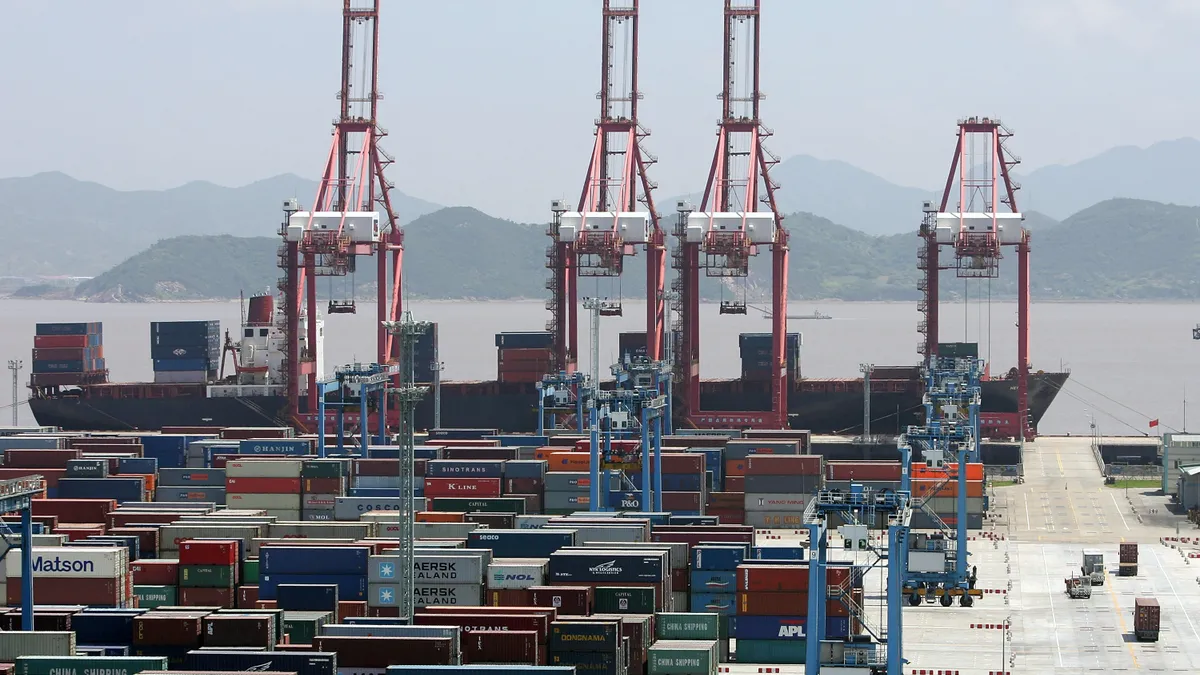Dive Brief:
- Tariffs hikes in 2018 on imports from China of apparel, footwear, furniture and travel goods have raised indirect and direct costs for companies and prices for consumers, according to a new study released last week by five major industry groups representing brands and retailers.
- Direct costs from the tariff amounted to more than $1 billion annually each for apparel and furniture imports, as well as nearly $800 million in 2022 for travel goods and over $450 million in 2022 for footwear.
- According to the study, price hikes fell disproportionately on lower-income and minority households. However, it also notes the difficulty in estimating the impact of tariffs on price inflation compared to the demand surge and supply chain backups that led to record inflation in the pandemic era.
Dive Insight:
For nearly five years now, consumer goods industries that rely heavily on Chinese imports for low-cost sourcing have been waging a campaign against the Section 301 tariffs.
In the years since the Trump administration raised concerns about a modern trade war, China’s share of imports to the U.S. have fallen in those consumer goods categories covered in the report. Once again, it’s difficult to parse out the effects from tariffs from those arguably much larger impacts from supply chain risks and costs relating to the pandemic and China’s internal response to it.
From 2017 to 2022, China’s share of total apparel imports has fallen from 34% to 22%, according to the study, which was released by the American Apparel & Footwear Association (AAFA), the Footwear Retailers & Distributors of America (FDRA), the National Retail Federation (NRF), the Retail Industry Leaders Association (RILA), and the United States Fashion Industry Association (USFIA). China’s share of 301 tariff-specific apparel imports fell from 92% to 88%.
Footwear imports from China fell even more dramatically, from 56% to 40% of worldwide imports, while travel goods from China fell from 58% to 24% of global imports and furniture fell from 49% to 25%. In the latter two cases, China’s share of 301 imports specifically remained unchanged at 100%.
Shifting sourcing out of China added to companies’ indirect costs, according to the study. So did uncertainty around the tariff exclusion process — which, like the tariffs themselves, is still ongoing under the Biden administration — and the need to establish “bifurcated” supply chains to make use of Chinese sources when selling to markets outside the U.S.
An executive survey included in the study found over 80% of respondents said that they passed at least some of the tariffs on to customers with higher prices, and another 10% passed all of the tariff costs on to customers.
Academic research has also found that consumers paid for the tariffs, including a 2021 paper from an American University economist that concluded that the full set of Section 301 tariffs cost the average U.S. household at least $145 year. It also found that the new import taxes were “highly regressive,” taking up a much higher share of spending for lower incomes.














